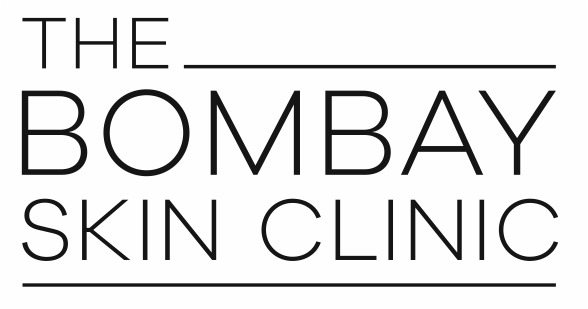Overview | Facts about the process | Questions to ask the doctor | Steps involved in the procedure | Post-procedure care and future precautions
Getting a tattoo on your skin is an old practice. People have been doing this for quite a long time now! However, what happens when you get an infection from your tattoo or if you simply do not want it anymore? I can assure that getting your tattoo is not impossible even if it is more complicated than actually getting a tattoo. Today’s tattoo removal methods have become more advanced and effective, especially the laser technique. With it, I can help you get rid of any tattoo that you do not want anymore.
What facts should you know about the tattoo removal process?
The National Health Service UK (NHS UK) website states that there are certain limitations to the process of removing tattoos. Depending on the depth and size of your tattoo, it may require ten or more sessions to remove it completely. Sometimes, it is impossible to remove certain tattoos entirely, and they leave behind little ink spots. If you are pregnant, then I will suggest you wait until having your child before removing any tattoo, else it can harm the baby. Lastly, I want you to know beforehand that the procedure can be a little uncomfortable.
What should you expect during a consultation with the doctor?
When you first visit me for the consultation, my first job will be to ensure your complete safety. I will discuss your medical history, including any health-related complications you are currently facing, if you ever had any surgery before, any history of keloids, what medicines you regularly take, and what you expect from the laser tattoo removal procedure. I will explain to you all the risks associated with it and make sure that all your doubts are cleared.
What questions should you ask the doctor before treatment?
To clear your doubts, you can ask me as many questions as you need to and I will do my best to answer them all. To make it easier for you, let me give you examples of questions that my patients generally ask me.
- Will the procedure hurt too much?
- What is your qualification?
- How much experience do you have with removing tattoos?
- What do I have to do after removing my tattoo?
- Will I need multiple sessions?
- How much will I have to pay for laser removal?
- Are there any risks?
What are the different types of procedures?
- Laser surgery – According to the American Academy of Dermatology, laser tattoo removal has become more effective and popular, as compared to any other removal method. The advanced Spectra XT is a highly specialized Q-switched laser machine. It is approved by the US FDA. This machine releases a powerful pulse of energy that can destroy the tattoo ink by heating it. It uses a beam of light to significantly lighten or completely remove the tattoo.
With this laser machine, various wavelengths of light are emitted from the laser directly on the tattoo. In the next step, the tattoo ink particles absorb the light emitted from the laser. After this, the ink particles are broken into fragments. Later, these are absorbed through the body’s immune system. You will require multiple sessions to break down the ink particles and achieve the best possible result. If your tattoo is multi-colored, then different lasers and wavelengths will be required to remove it. - Surgical removal – The surgical tattoo removal technique can also be used to get the job done. To perform this, the targeted area will be first numbed with anesthesia. A surgical scalpel will then be used to remove the area of the skin where the tattoo is located. Your skin around the operated area will be stitched together once the tattoo is removed. The one thing that you must keep in mind is that the surgery will leave a scar behind. The larger your tattoo is, the bigger the scar will be. With the advancements made in the laser technology, the laser treatment has become more popular and has made the surgical procedure obsolete.
What are the steps involved in the Spectra XT laser procedure?
Firstly, I will test how your skin reacts to the Spectra XT laser to determine how much energy will be the safest for you. If required, you will be given a pair of eye-protective shields. Depending on how sensitive the targeted area is, you might be given an anesthetic injection to numb the area. Once you are prepared, the laser pulse will be sent into the upper layer of your skin. The heat from the laser energy will destroy the ink of the tattoo.
The number of pulses required for the procedure depends completely on the size of your tattoo. Once the laser tattoo removal procedure is completed, an icepack will be applied to the treated area for soothing your skin. An antibiotic cream is also applied to the area along with a bandage. Each session may take up to 20 minutes, depending on the type of tattoo you have and how big it is. If your tattoo has many colors then you will require more sessions to remove it.
What are the risks with the Spectra XT laser procedure?
Even though it is the safest method currently available, the procedure has certain risks too. It can cause some infection and leave behind a permanent scar. In some cases, the treated area can become lighter or darker than the surrounding skin. Lastly, there is always the chance that your tattoo will not fade away completely.
What results to expect after the Spectra XT laser procedure?
According to Harvard Health Publishing, the laser tattoo removal technique may not be always able to remove the tattoo completely, but it can surely do 75% of the job. The success depends largely on the color of your tattoo. While black and red colors can be easily removed, it is difficult to get completely rid of lighter colors. Colors like blue and green are not too hard to remove either.
How many sessions will be required of the Spectra XT laser procedure?
The number of sessions required to remove your tattoo depends on its size, location, and color. If you have a large tattoo, you may have to visit the clinic four to ten times wherein each session has an interval of approximately two months so that you achieve the best possible result.
What are the post-procedure care and future precautions required?
All you have to do after the laser tattoo removal is to make sure that the treated area is not further irritated. Avoid direct exposure to the sun and invest in a quality sunscreen. Make sure that you keep the area clean and do not shave around it for at least a week. Also, avoid smoking as it can slow down the healing process.
Closing thoughts
Not all tattoos can be permanent. Sometimes you may want to forget certain memories or simply change your appearance. I can assure you that with the right laser procedure, it is possible to remove the tattoo without hurting your skin. After the treatment, your tattoo will be a thing of the past.
References
- National Health Service UK: https://www.nhs.uk/conditions/cosmetic-procedures/tattoo-removal/
- American Academy of Dermatology: https://www.aad.org/public/cosmetic/hair-removal/laser-tattoo-removal
- Harvard Health Publishing: https://www.health.harvard.edu/staying-healthy/tattoos-leaving-their-mark

 Dr. Batul Patel is a celebrity dermatologist and the medical director of The Bombay Skin Clinic an award winning clinic located in South Mumbai & Bandra. She is a passionate and dedicated dermatologist with expertise in all fields of dermatology, trichology and aesthetic dermatology. She has been practicing for more than a decade. Her range of expertise include emsculpt NEO, coolsculpting, fillers, acne treatment, lasers, skin rejuvenation, hair loss, hair transplant, PRP & pigmentation treatments.
Dr. Batul Patel is a celebrity dermatologist and the medical director of The Bombay Skin Clinic an award winning clinic located in South Mumbai & Bandra. She is a passionate and dedicated dermatologist with expertise in all fields of dermatology, trichology and aesthetic dermatology. She has been practicing for more than a decade. Her range of expertise include emsculpt NEO, coolsculpting, fillers, acne treatment, lasers, skin rejuvenation, hair loss, hair transplant, PRP & pigmentation treatments.